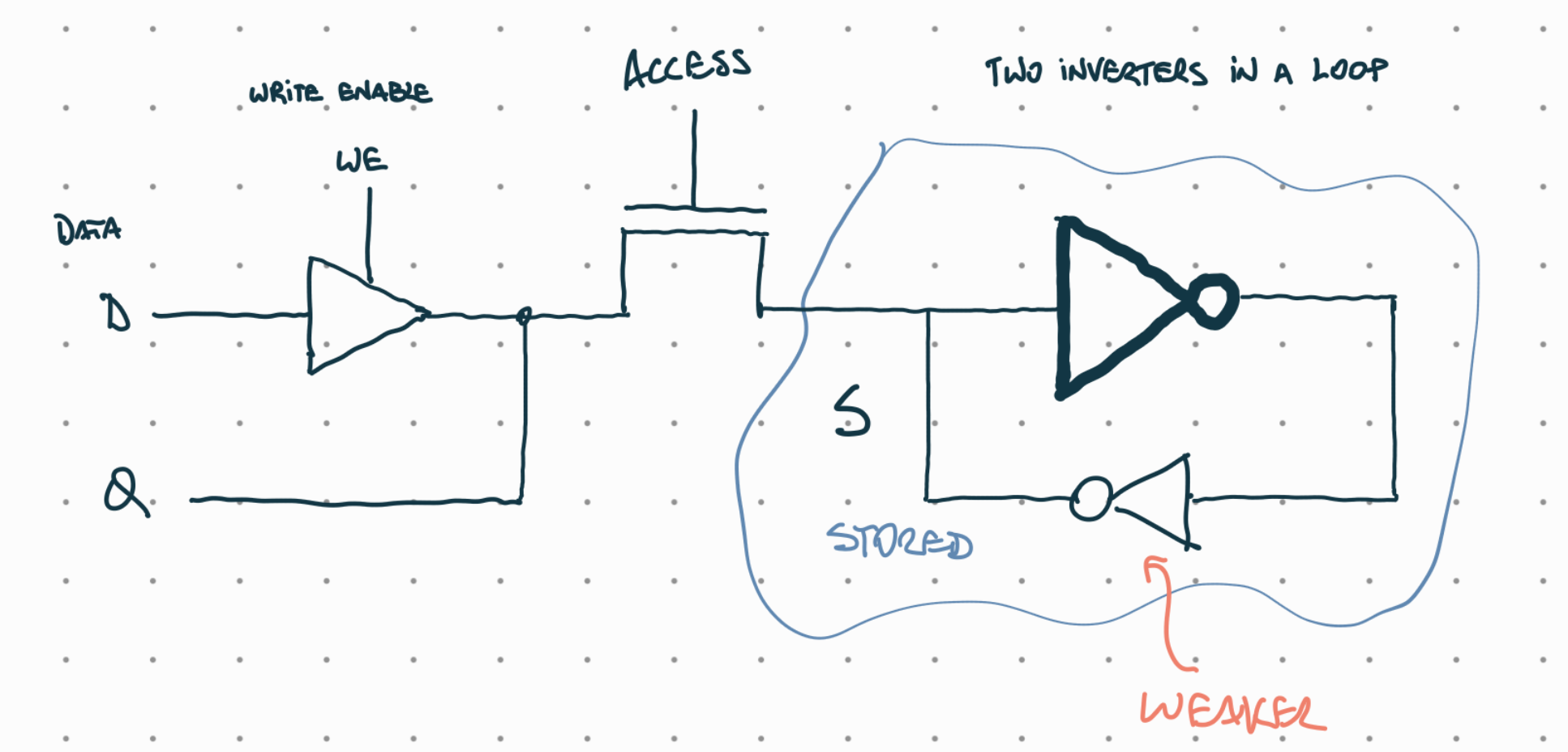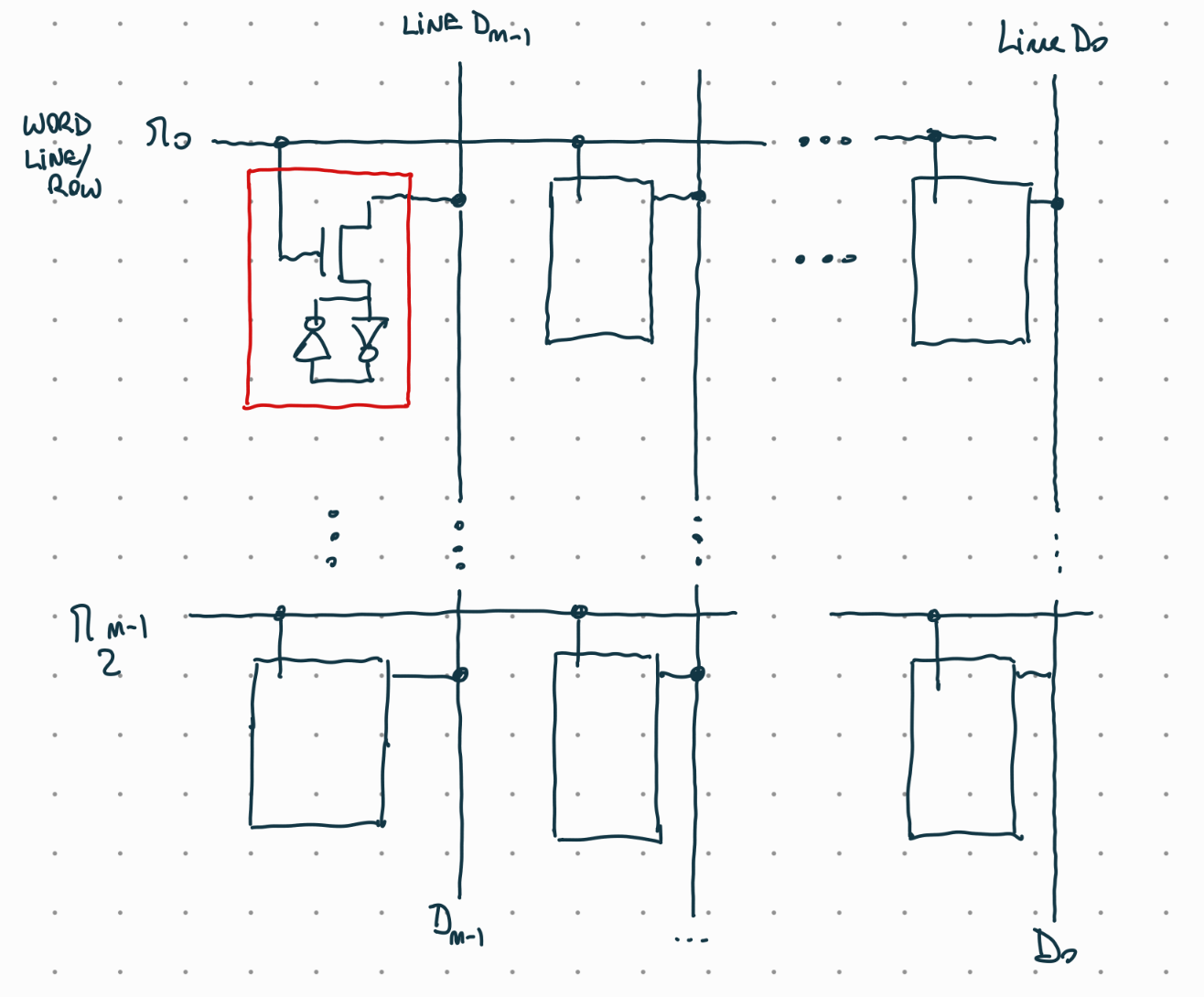SRAM (static random-access memory) is a type of RAM that uses two inverters to store bits of data. SRAM is distinguished from DRAM in that it stores data permanently if powered and is faster than DRAM but more expensive in terms of silicon area and cost.
One of the two inverters is weaker, and is overwritten.1
 When access is 1, and:
When access is 1, and:
- If write enable is 0, then what is stored it output, i.e., .
- If WE is 1, then and is written.
When access is 0 and the memory is powered, the loop will “remember” the bit. When structured with other pieces of memory:

Footnotes
-
From Prof Korst’s lecture notes. ↩